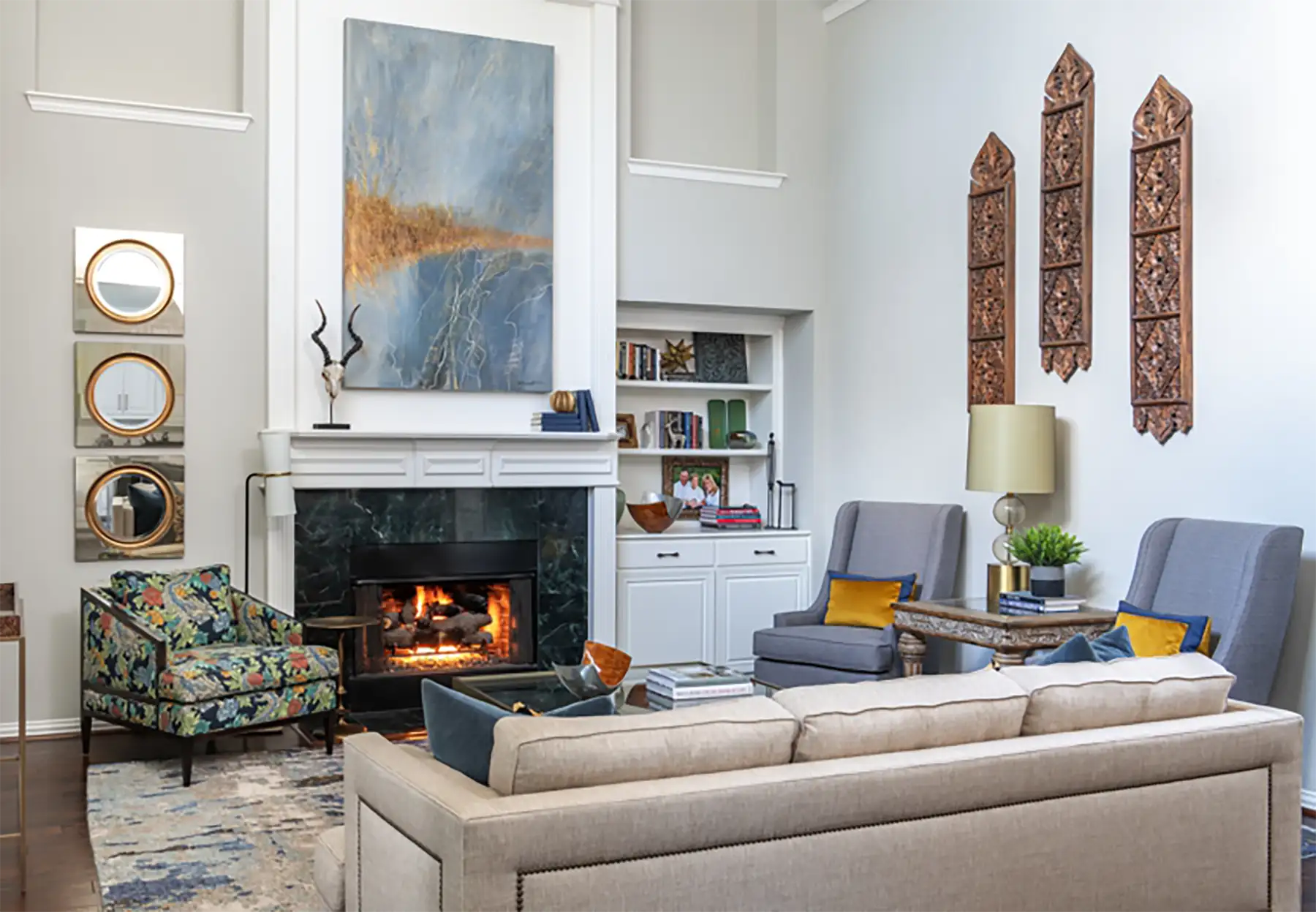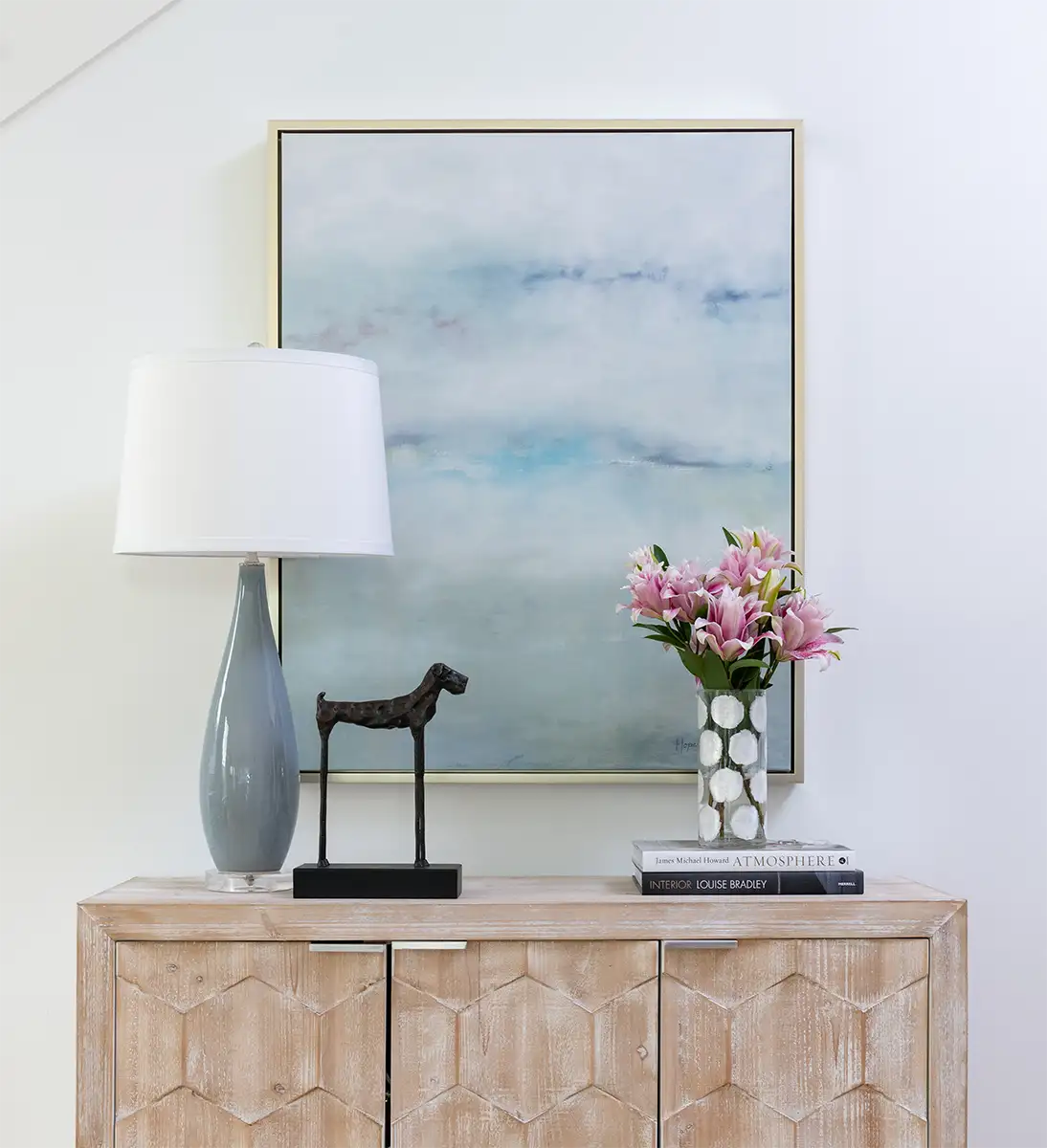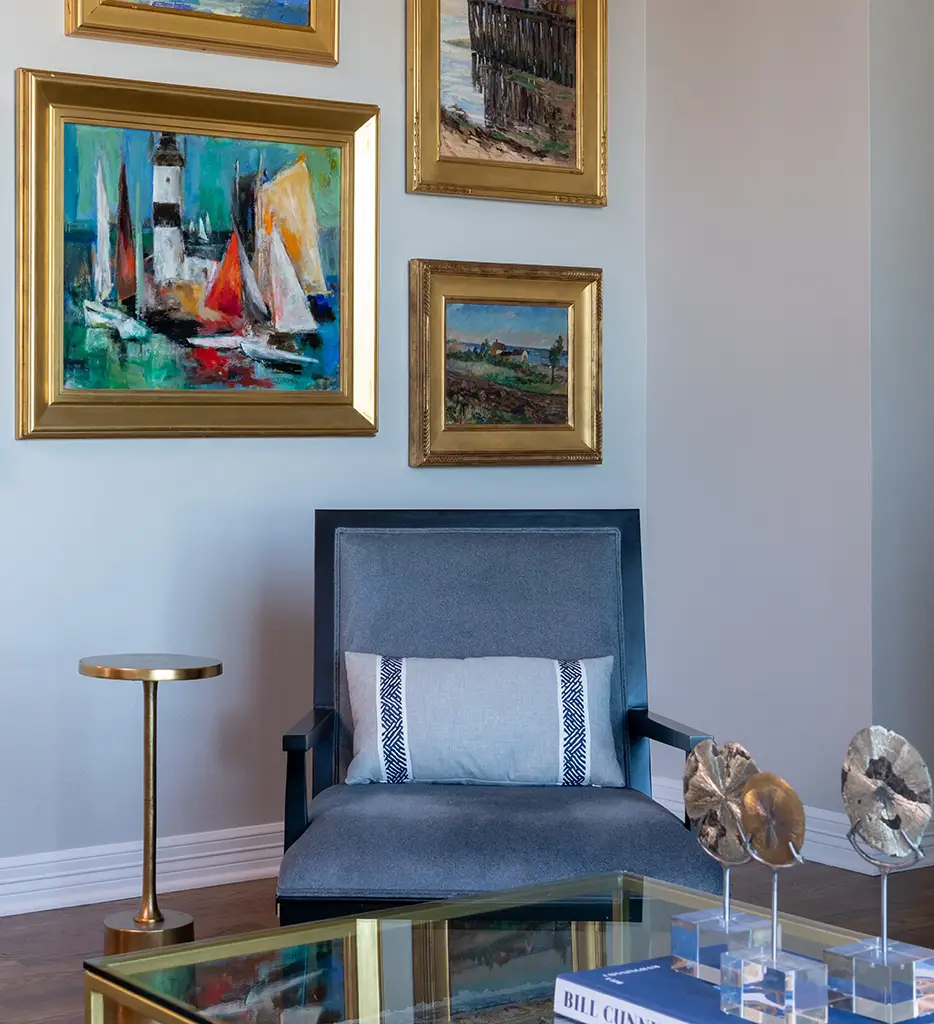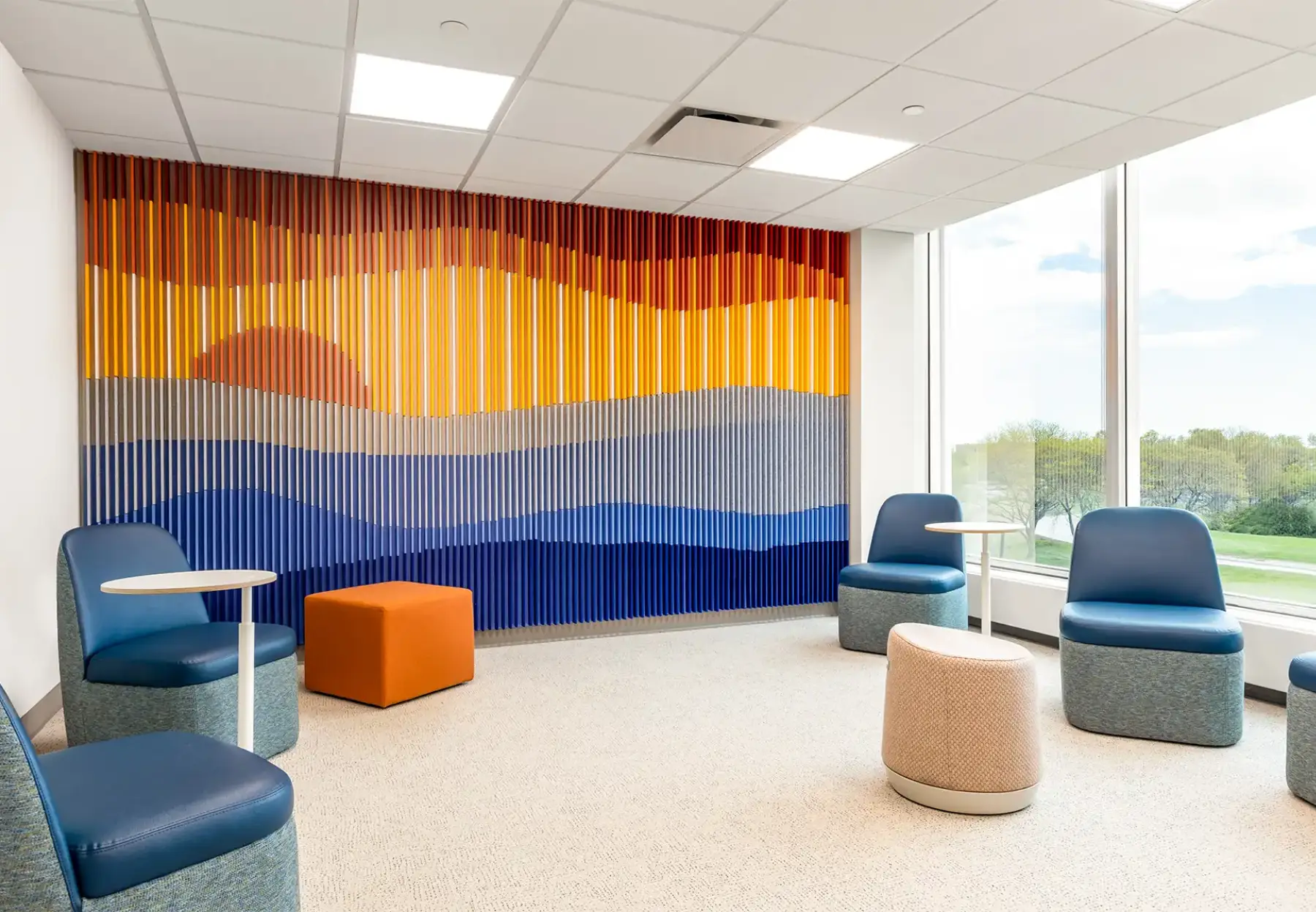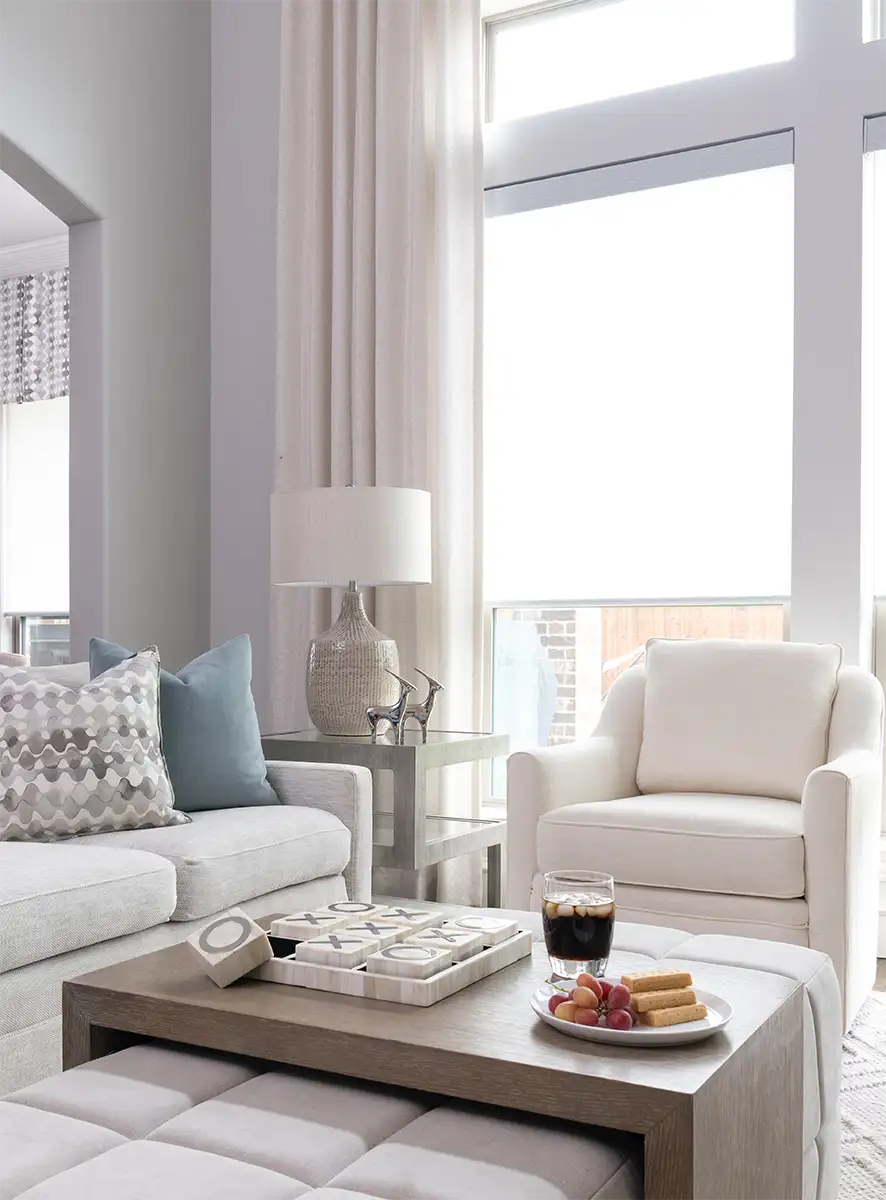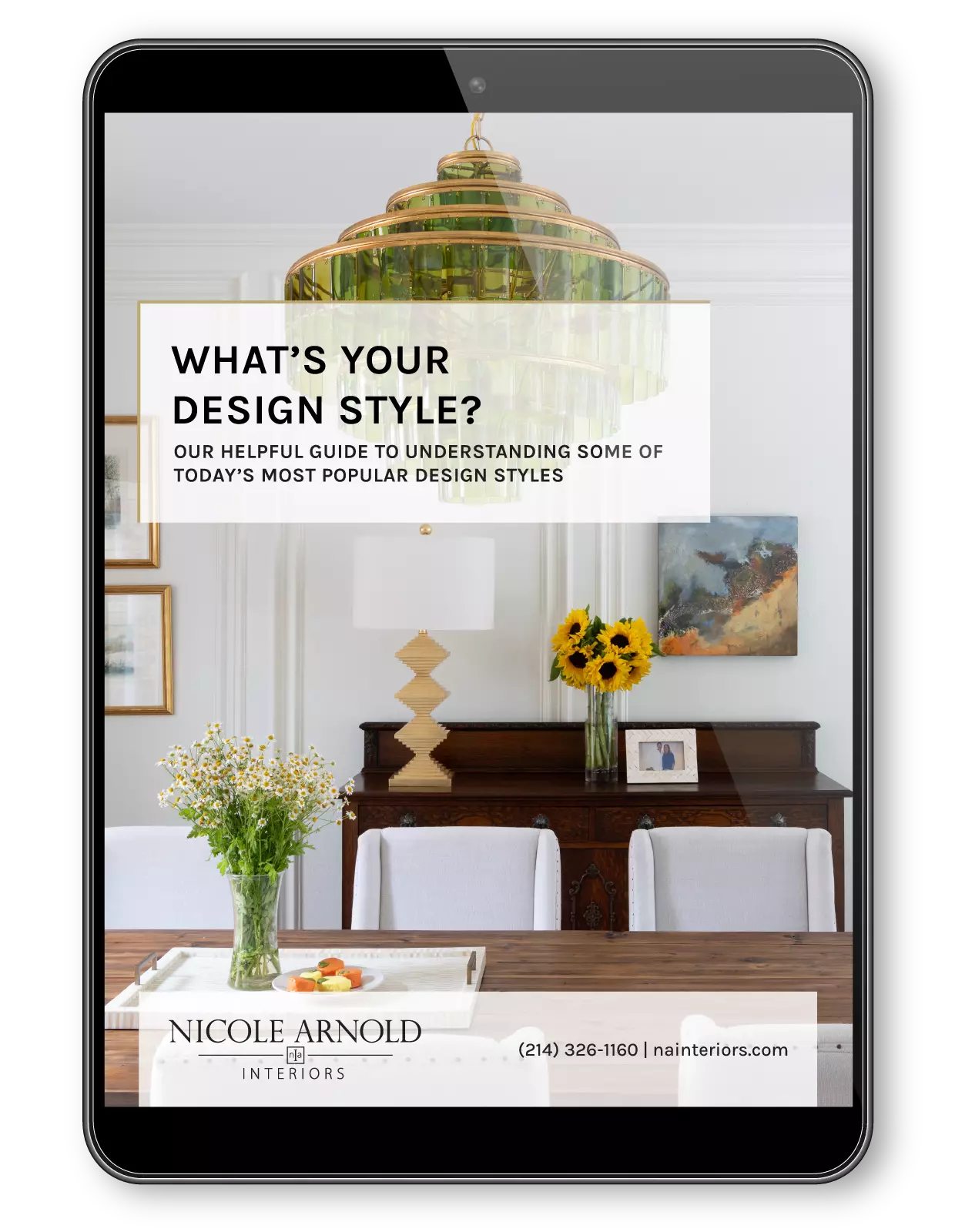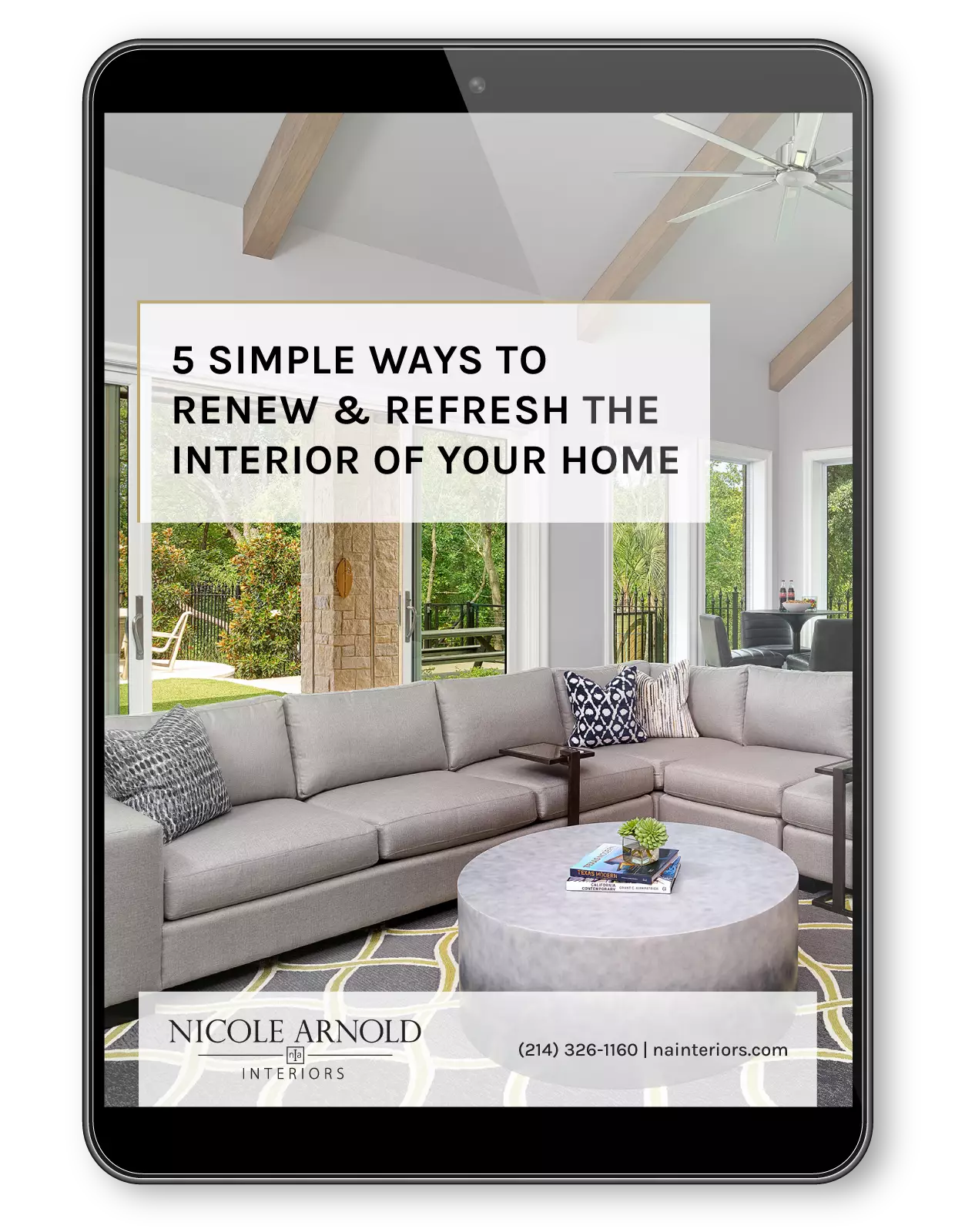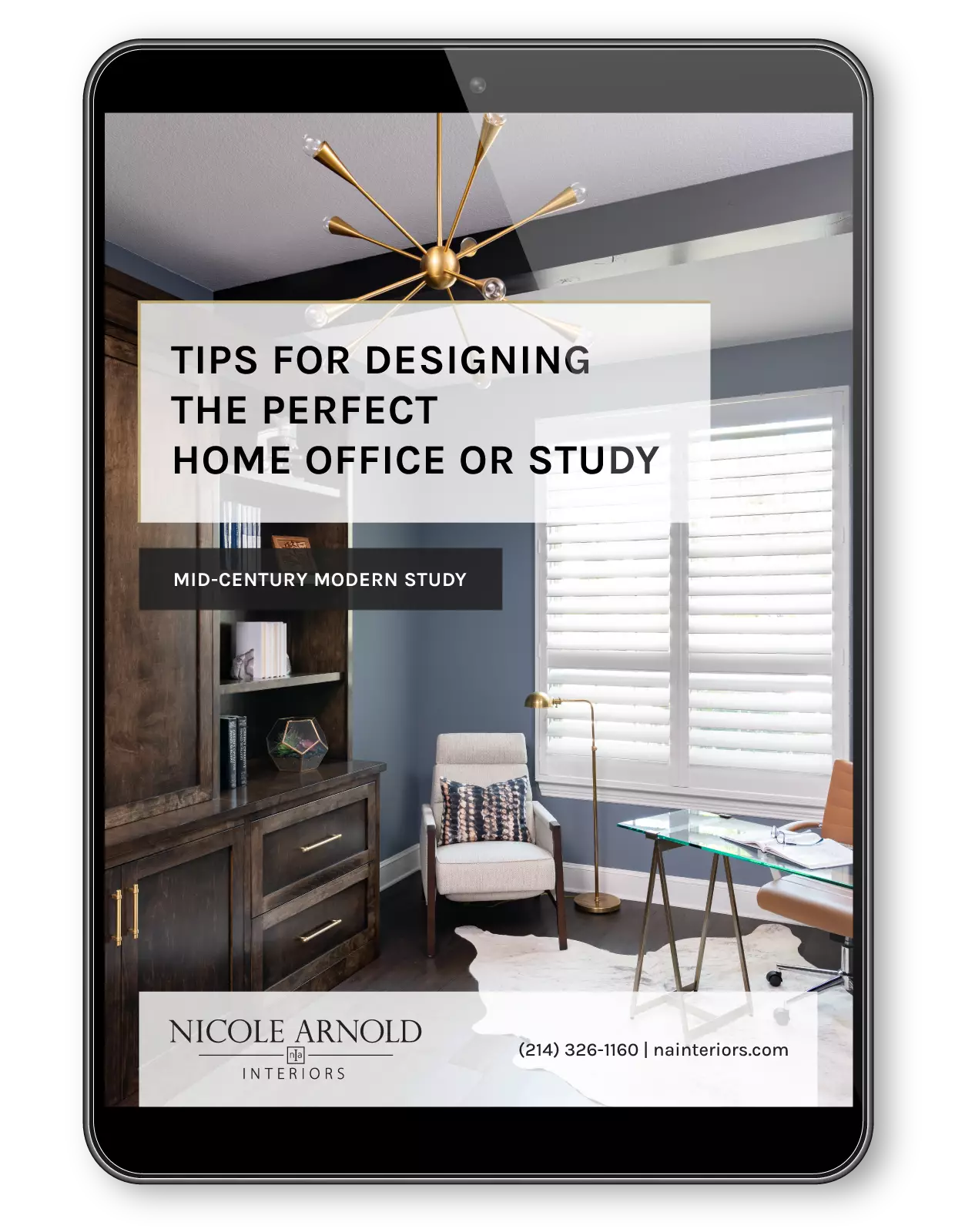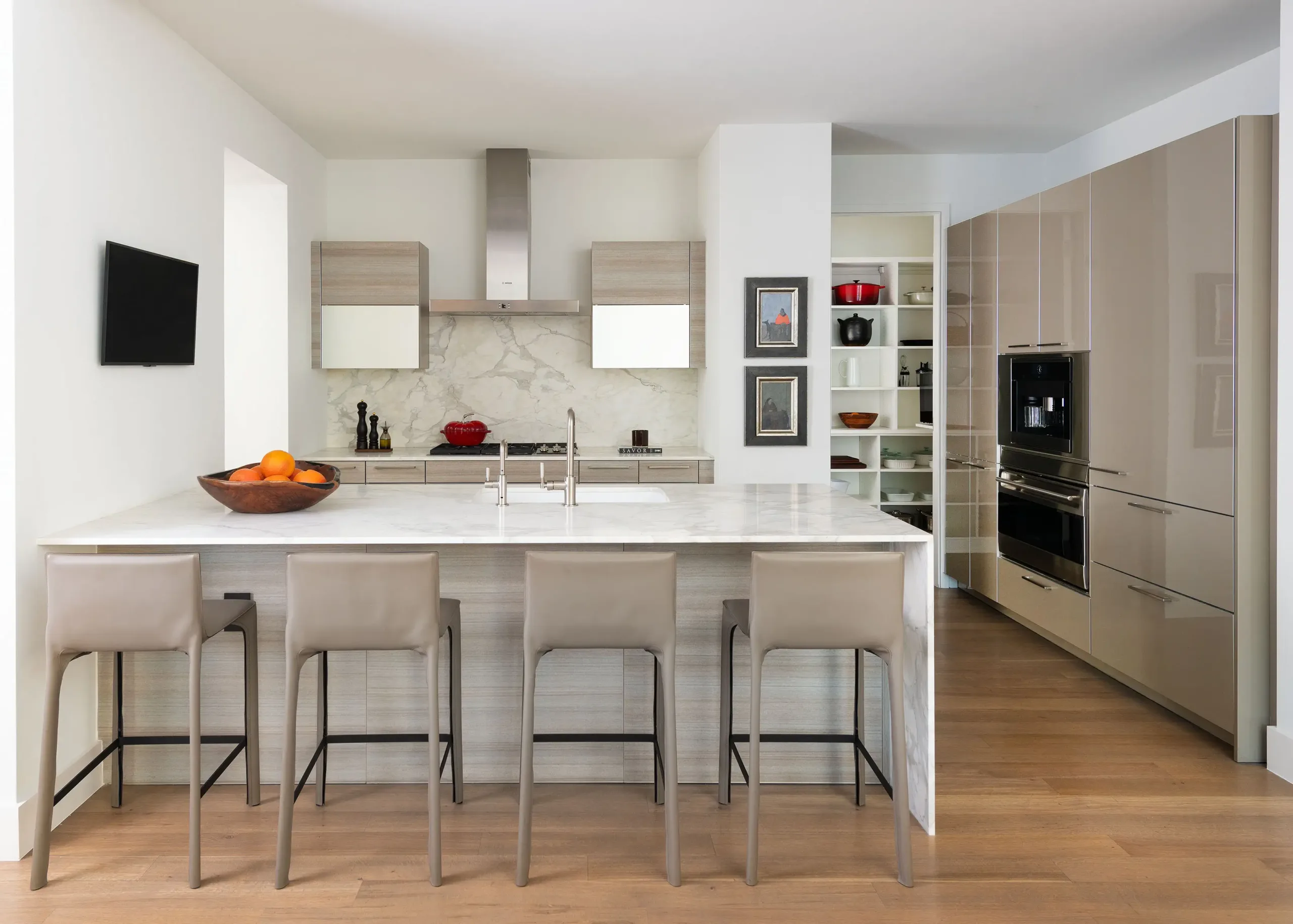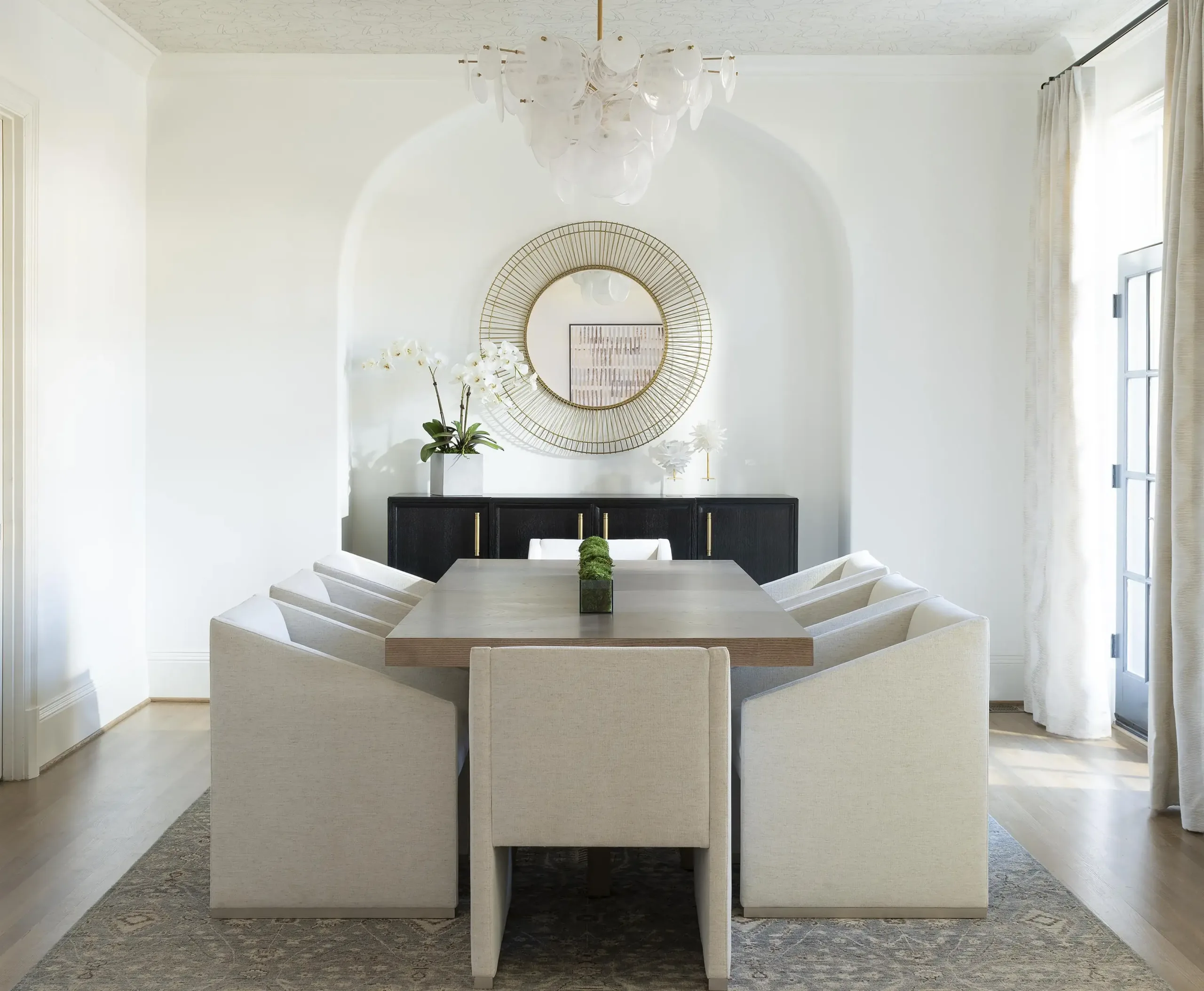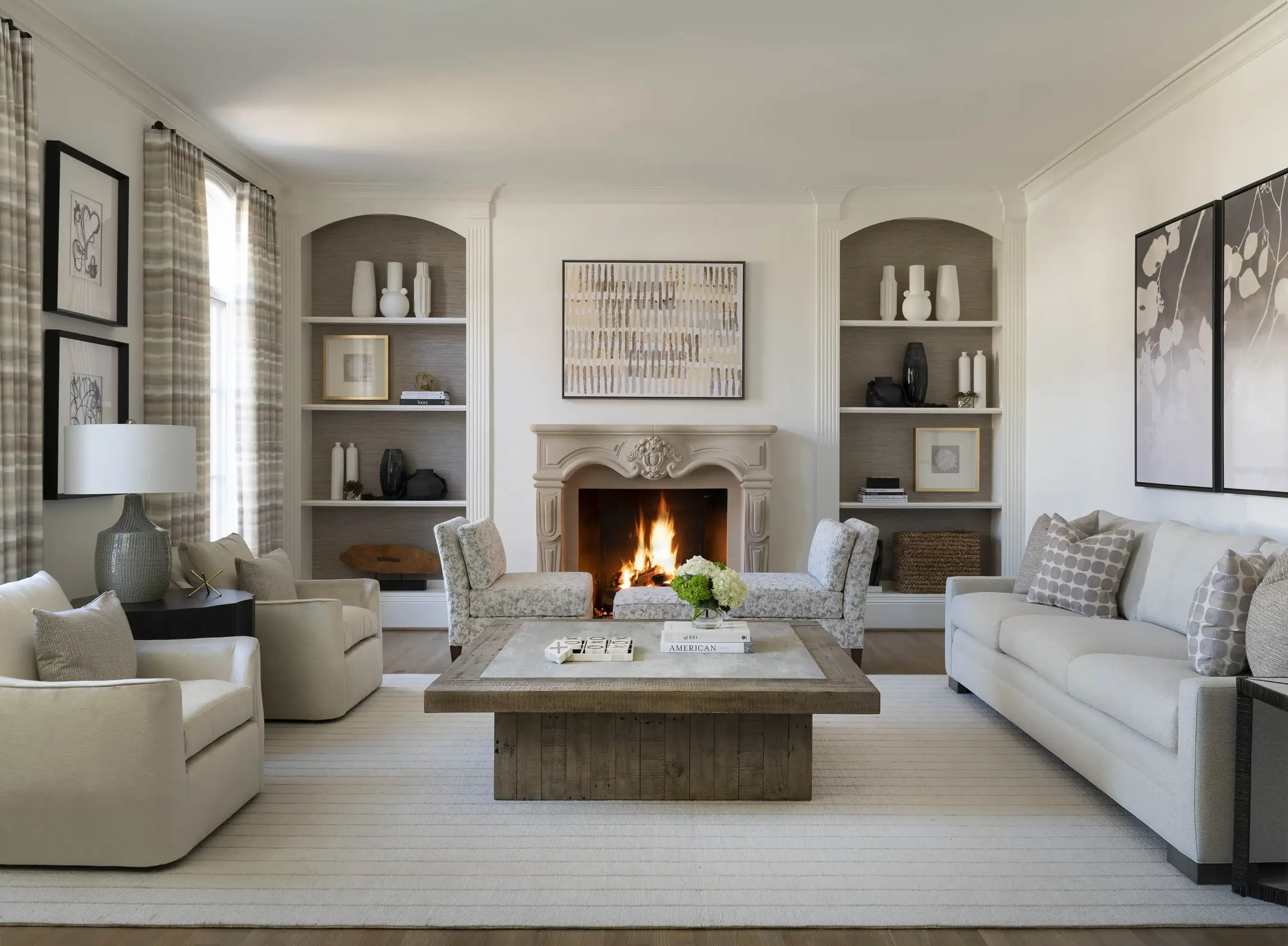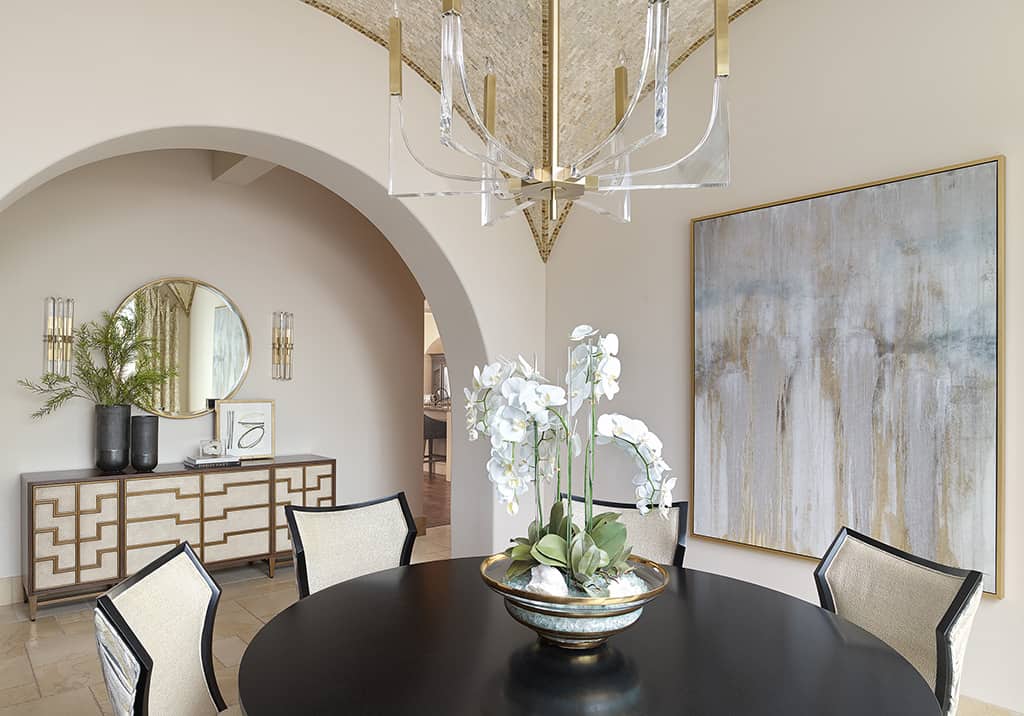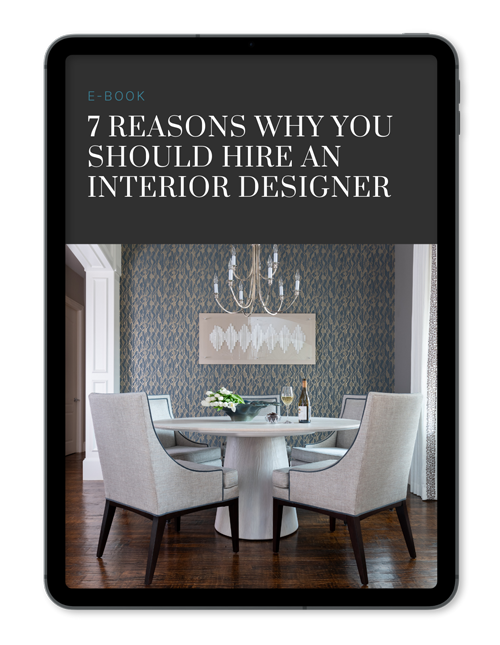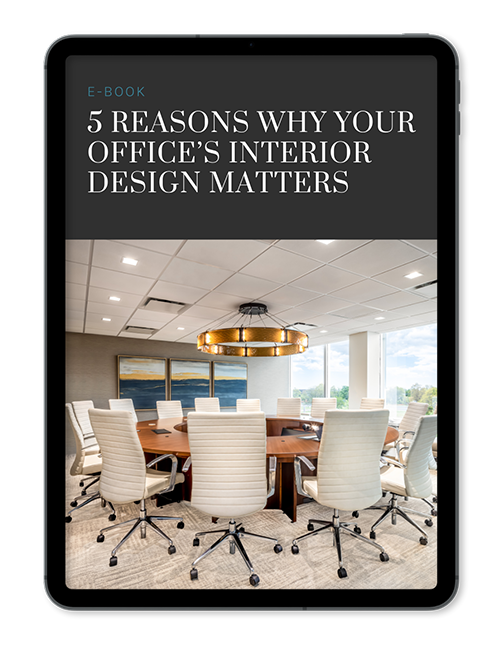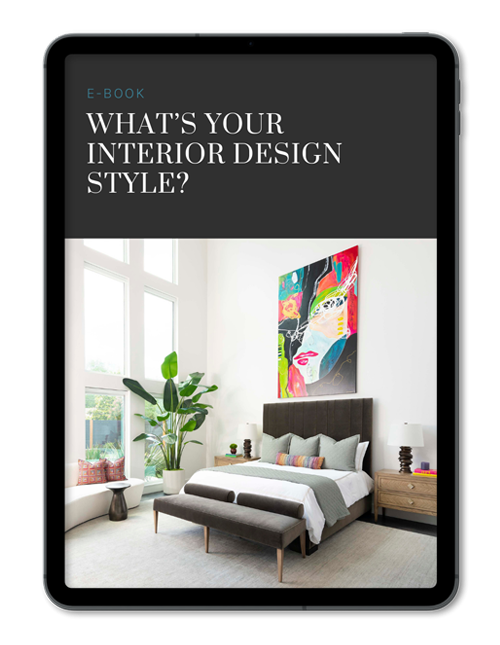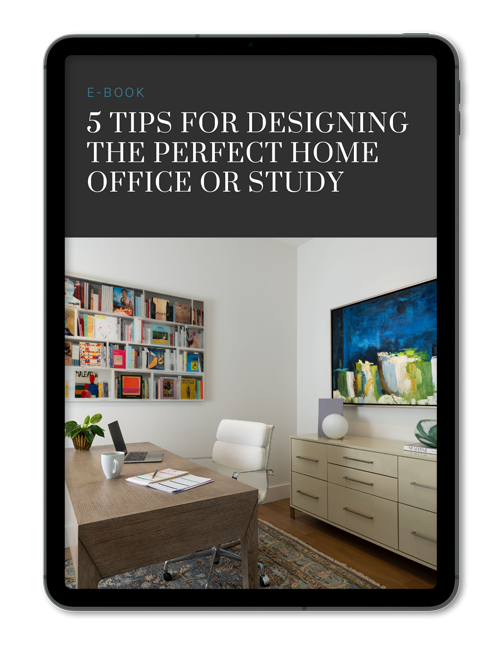When you walk into a space, what do you notice first? For some it may be the visual design elements, for others a room’s scent may come into focus. When beginning a design project, it’s important to assess how each of the 5 senses interact with the other to fit into your design concept. We can’t wait to help you make “sense” of all the sensory triggers below so that you can use all five successfully – Let’s get to it!
View The Visual Cues
Was it love at first sight?! Walking into a new interior, most individuals immediately notice the overall look and tone of each room. This is why designing by sight is our first step in a project and may seem like the most intuitive. It’s important to figure out what overall look you are aiming to achieve with your new design, whether it be modern, simplistic, cozy, eclectic, or another style! When designing, ensure there’s a prominent focal point in each room so the eye knows where to begin and then dovetail other elements as complements to this focal point. Create cohesiveness by selecting fabrics, paint colors, decor, lighting, and rugs that interact with each other seamlessly. Tell a story through visual cues that can be expanded upon by successfully incorporating the other senses.
Follow the Fragrance
Fragrances enhance a room’s experience by stimulating the olfactory receptors, which is a second thing to be mindful of when taking on a design project. Some scents can naturally add goodness to a space, like the smell of freshly baked bread, polished floors, laundry, or flowers from your local market. But having a signature scent elevates the story you created with your visual design cues so that anyone who enters the room experiences the ambiance you are aiming for. Induce relaxation with aromatherapy oils, spice it up seasonally with organic candles, or check out a subtle room and fabric spray. Circulate the scent with ceiling fans or the breeze from an open window so that the fragrance can travel to each room of your home or corporate office.
Elevate With Elegant Touches
We often talk about the ‘look and feel’ of a space, but never really get into why touch is such a valuable part of the design process. At the end of the day, you design a space to “live” in, so how you interact with the elements are important to get right. If you love to cozy-up on your couch and watch a movie, sumptuous fabrics on upholstery, throws, pillows, and poufs ensure the most comfortable lounging. Performance fabrics are now so appealing “to the touch” and are in such hot demand because they keep your investment safe from spills, wear and tear throughout the years.
Rug type and style also help tell a room’s design story and can make a difference in how they feel under bare feet. There are so many options out there, including sisal, wool, jute, cotton, silk, and animal hide rugs; it’s easier than ever to choose a fiber and construction that’s best for your lifestyle! Don’t underestimate how these seemingly minute decisions can play a big part in the overall physical experience that help pull a design together.
These Walls Can Talk
After the overall look, aromatics, and touch are added to a space, consider the way sound moves around each room. In a new construction or renovation process, insulated windows are a must for high rises and noisy neighborhoods to ensure traffic doesn’t overpower a space. In a redesign, music or white noise can enhance a room that’s overly quiet or dampen excess sound. If sound tends to bounce around and the space feels echo-y, create sound barriers with design elements such as an area rug, drapery layers or thick pillows. And, in rooms with in-wall or in-ceiling speakers, a professional A/V consultation is a must! In our blog, ‘Reimagine Your Office Space’ we detailed some additional ideas for designing a smart soundscape in a corporate office, including utilizing acoustic ceiling tile and cubicle fabric.
How To Have Great Taste
The last of the senses to weave into your design is taste! Particularly when you are entertaining in a residence, serve snacks and drinks that complement the story and theme of your home. Evaluate which cuisines and flavor profiles match your space – salty, savory, sweet, bitter, or sour. If you have a modern or retro home, a meat and cheese charcuterie board with olives combined with a gin cocktail is a classic choice. Going traditional or European influenced, French macarons in various colors are an NAI staple and are always a crowd pleaser. If ultra modern, consider some gourmet chocolates that are artistically designed with uncommon flavors and colors. There are no rules when it comes to adding the final flavors to your room…go global with your cuisine and snack choices or make your favorite family recipe in little bites for guests to enjoy. After all, this can likely be the element your guests remember most!
Use Your Senses With A
Design Team
Amplify your design project by utilizing each of the senses to provide a cohesive look, feel, scent, sound, and taste that matches your desired theme for your residence or office. Make sure that it tells the story you want to tell, whether it’s of calmness, productivity, coziness, or upbeat. Designing with all five senses can require much thought, but is made easier with the help of a design team! Book a consultation with our team today!


